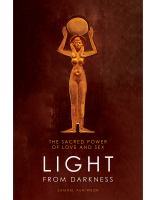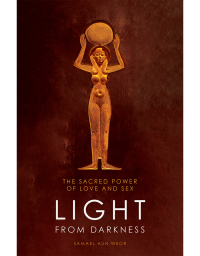Voidness1 is very difficult to explain, because it is indefinable and indescribable.
Voidness cannot be described or expressed in words. This is because human language is created primarily to designate existent things and feelings... —Garma C. C. Chang, The Nature of Zen
Thus, by no means is it an exaggeration to say that human languages are not adapted to describe things and feelings that are nonexistent, and nevertheless are tremendously real.
To attempt to discuss Voidness within the limitations of a language confined by the pattern of existence is [beyond any doubt] both futile and misleading. —Garma C. C. Chang, The Nature of Zen
It is necessary to know—to experience in a living way—the illuminating aspect of the consciousness. It is urgent to feel and experience the voidness aspect of the mind.
There are two types of enlightenment: the first is usually called “dead water” because attachments remain. The second is praised as the “great life” because it is enlightenment without attachments: the Illuminating-Voidness.
In regard to enlightenment, there are degrees and degrees, rungs and rungs. First, it is necessary to attain the illuminating aspect of the consciousness, and thereafter, objective knowledge, the Illuminating-Voidness. Buddhism states:
...form does not differ from voidness, and voidness does not differ from form. Form is voidness and voidness is form. —Prajnaparamita, or The Heart of Wisdom Sutra
...it is owing to Voidness that things can exist and, because of the very fact that things do exist, they must be Void. —Garma C. C. Chang, The Nature of Zen
Voidness is a clear and precise term that expresses the insubstantial and impersonal nature of beings, and an indication, a sign, of a state of an absolute absence of the pluralized “I.”
Thus, only in the absolute absence of the “I” we can experience reality, that which is not of time, that which radically transforms.
Voidness and existence are complementary to each other and not in opposition to each other; they include and embrace, rather than exclude or negate each other. —Garma C. C. Chang, The Nature of Zen
Common and ordinary every day people—which is people with sleeping consciousness—perceive things subjectively, namely surfaces, angles, lines. They never perceive complete bodies, namely from the inside and outside, above and below, ahead and behind, etc., and much less can they perceive the void aspect of things.
The person with an awakened consciousness and an empty and illuminated mind has eliminated the subjective elements from perception. This person perceives complete bodies, and the empty aspect of every thing. This is the non-discriminative doctrine of the middle path, the unification of voidness and existence.
The voidness is that which has no name… that which is reality… that which is the truth, thus, it does not matter what we call it. Yet, some call it Tao, others Inri, others Zen… Allah… Brahman…. Atman… God… The person who awakens the consciousness experiences the tremendous truth of no longer being a slave, and verifies with pain that the people who walk on the streets are dreaming; they “tread the streets like walking corpses.”
If by means of the inner remembering of one’s Self from moment to moment this awakening of the consciousness becomes continuous, one then arrives at objective consciousness, at Pure Consciousness, at the voidness aspect of the mind.
The illuminated consciousness is fundamental in order to experience reality and to reduce the pluralized “I” to cosmic dust; nevertheless, this state is still at the border of samsara2 (the painful world in which we live).
When the initiate has arrived at the state of awakened consciousness, the initiate has taken a formidable step, but unfortunately the initiate still continues to be obfuscated by the monistic idea; the initiate is incapable of breaking the subtle threads that connect him to certain things, to certain detrimental type of effects. One has not yet arrived on the other shore.
When the initiate unties the bonds that in one or another manner tie one to the illuminating consciousness, one then reaches perfect enlightenment, reaches free and entirely insubstantial illuminating voidness.
To reach the very center of the mind, to reach the illuminated void, objective knowledge, is something tremendously difficult, but not impossible; any Gnostic can achieve it, if one works on oneself.
The illuminated voidness is not nothingness; rather, the voidness is life free in its movement. The voidness is what is, what always has been, and what always will be. The voidness is beyond time and eternity.
The mind has three hundred thousand clans or receptive centers, and each clan must vibrate at the same tone without any effort.
The mind has a feminine nature, and it is made to receive, assimilate, and comprehend. The natural state of the mind is receptive, quiet, silent, like a profound and calm ocean.
The process of thinking is an abnormal accident, whose original cause is found in the pluralized “I.” When the mind is empty of all types of thoughts, when the mind is quiet, when the mind is in silence, the three hundred thousand clans vibrate to the same tone without any effort. When the mind is quiet, when the mind is in silence, then that which is reality comes unto us.







